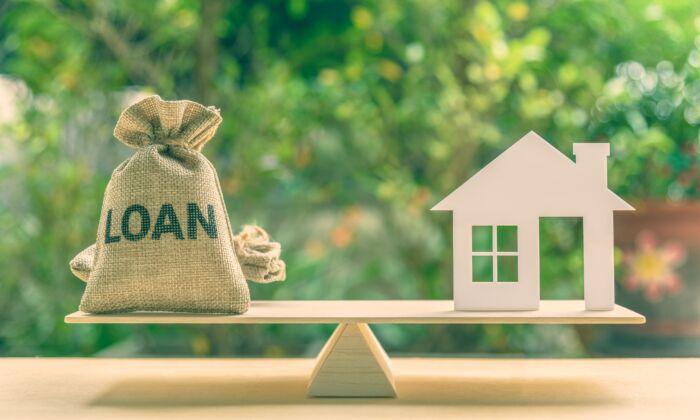Financial stability in uncertain times is the only way to ensure you’ll get through with as few bumps and bruises as possible. Look back to the pandemic and how blindsided millions of people were who didn’t have emergency funds, or if they did, weren’t nearly robust enough to see them through the pandemic.
In 2024, we aren’t facing the same level of financial worry, but there is plenty of economic uncertainty to consider. So far, we’ve seen the Federal Reserve keep rates steady for three consecutive meetings, and at the latest December meeting, policymakers hinted at three rate cuts in 2024. But the Fed’s overall goal is to reach 2 percent inflation, which, it seems, the economy still has a long way to go to achieve.
No one has a crystal ball to predict what the economy will do, so having a fully funded emergency fund is the only way to stay afloat.
The Importance of an Emergency Fund
An emergency fund is money saved for things you didn’t expect like car trouble, job loss, or an illness. Without an emergency fund, even one unexpected expense could cause financial trouble.Think of what you would do if your income stopped or you were hit with a large, unexpected bill that didn’t fit your typical budget. We all know life can happen to anyone. This year, the Congressional Budget Office predicts the unemployment rate will hit 4.7 percent. That’s higher than their prediction for 2023, so it’s even more important to brace yourself for the unexpected this year.
Setting Your Emergency Fund Goal
No two people will have the same emergency fund needs, since you can’t predict how much you'll need or when it’s important to look at your situation.Everyone should start by saving three to six months of their monthly expenses. This includes the following:
- Housing costs, including mortgage/rent, utilities, insurance, and maintenance
- Transportation costs, including car payments, gas, parking, tolls, insurance, and maintenance
- Food costs, including groceries and food needed outside the home, such as lunches for school or work
- Medical needs, including health insurance, doctor bills, and medicine
- Standard household needs that are crucial for survival
- Do you have extra expenses that may occur outside of your typical budget?
- Do you have dependents?
- Will you need to take on health insurance premiums or retirement fund contributions if you lose your job?
- What other unexpected costs could arise that you should have money set aside to cover?
Strategies for Building Your Emergency Fund
The strategies you use for building your emergency fund are the key to success. Even if you live paycheck to paycheck or don’t think you have enough to reach your emergency fund goals, there are ways to make it happen.- Set small goals. Don’t set unattainable goals and then not reach them. Instead, set small goals, like saving $500–1,000, and celebrate when you achieve them! You can then cover a small emergency and have some peace of mind.
- Make saving a part of your budget. Just like you have line items for things like your mortgage and car payment, set a line item for emergency fund savings, and pay yourself on payday without fail.
- Set up automatic savings. To avoid the risk of spending the money needed for your emergency fund or forgetting to save, automate it. You can do this through your employer’s direct deposit or using your bank’s automated transfer program.
- Cut back on unnecessary expenses. If you can’t find money to save, comb through your budget and see what you can cut back on. You might find you can save several hundred dollars a month or more just by cutting out a few unnecessary expenses.
Growing Your Emergency Fund Over Time
The key to where you keep your emergency fund is keeping pace with inflation. If you throw the money in a standard savings account that yields an annual average of 0.46 percent, you aren’t going to keep pace even with low inflation rates of 2 percent.Instead, you must invest your money where it will grow and keep pace with inflation, such as:
- High-yield savings accounts
- Money market accounts
- Government-issued bonds
- Certificates of deposit (CDs)
No matter which accounts you choose, always revisit your goals, investment performance, and reallocate your funds as needed.
Overcoming Common Challenges to Building an Emergency Fund
The most challenging part about building an emergency fund is starting. It takes a change in routine, and possibly cutting back on certain expenses. Knowing how to overcome the most common obstacles is important:- Low income: Living paycheck to paycheck may make saving an emergency fund feel impossible. Start by cutting out unnecessary expenses and set up automated savings so you always save at least a little.
- Unexpected expenses: If you use some of your emergency funds, you must make up for that amount as quickly as possible. Increase your savings per month if possible to ensure you have enough money saved.
- Debt: It’s a fine line to decide whether to save in your emergency fund or pay off debt. Paying high-interest rates robs you of any interest you may earn on savings, so splitting any available funds for savings between your emergency fund and debt is ideal.
Conclusion
Financial stability in uncertain times is the only way to have peace of mind. Saving today for what might happen tomorrow is the best way to avoid financial ruin. An emergency fund brings peace of mind, knowing you can withstand the unexpected, whether it’s job loss, illness, or unexpected bills.Consider reevaluating your emergency fund today and revisiting your budget to see how you could improve your fund and have more peace of mind. It may feel like sacrifice at first, but eventually, you'll get into the habit of saving and realize it’s for the greater good. Ongoing financial peace versus instant gratification is an easy decision for most.
The Epoch Times copyright © 2024. The views and opinions expressed are those of the authors. They are meant for general informational purposes only and should not be construed or interpreted as a recommendation or solicitation. The Epoch Times does not provide investment, tax, legal, financial planning, estate planning, or any other personal finance advice. The Epoch Times holds no liability for the accuracy or timeliness of the information provided.







